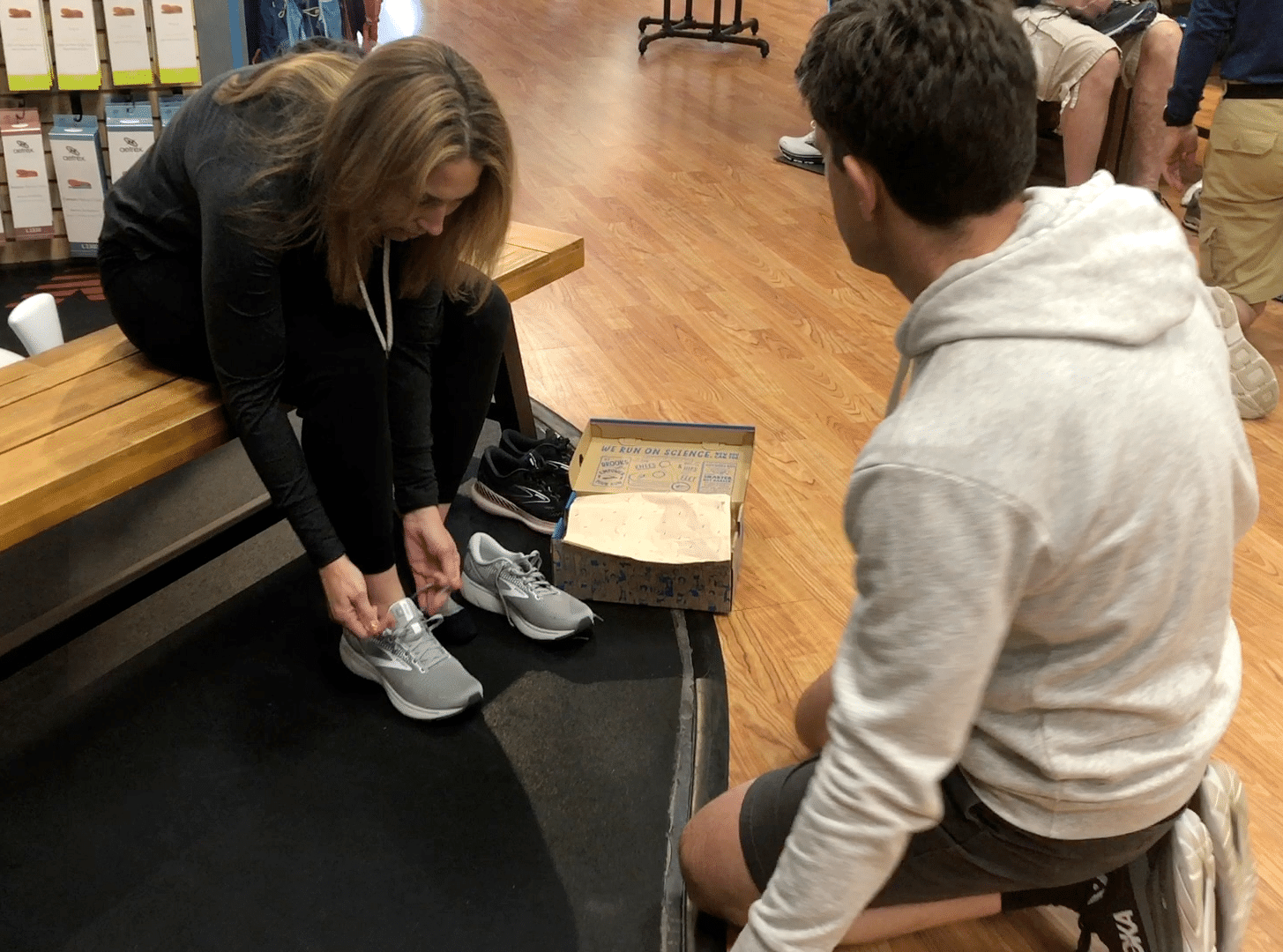BIG PEACH
RUNNING CO.
FIT PROCESS
The Big Peach Running Co. fit process helps us find the right shoe so that running, walking or just being on your feet all day is more enjoyable. There is no need to make an appointment, and it is free of charge.
Fit Process
Shoes are the most important piece of equipment for runners and walkers. Our job is to make sure that you not only have a GOOD shoe but the RIGHT shoe for YOU. Our fit process is focused on determining which good shoe is BEST for YOU.
So how do we do this? Let’s start by identifying the three primary roles of a shoe:
- Accommodate Foot Characteristics
- Provide A Stable Platform For The Foot
- Protect The Foot From Shock Generated At Impact
How It Works

1. Let’s Learn a Little About You
What are you using the shoes for? What shoe are you currently using and have you had a shoe that has worked well in the past? Do you currently have any injuries or discomfort while running, walking or standing? These are all good questions that help us get a better idea of the end goal.
2. Foot Scan
Our foot scanner captures both two and three-dimensional images of your feet! This helps us understand depth of arch, how you distribute pressure on your feet, your width, length, arch height and also covers instep and girth (yep, you can find out in what percentile your foot girth falls!) It even makes recommendations for inserts to reduce some of the points of pressure.






3. Video Analysis
If you’re running or walking, a quick video analysis helps us determine what degree of support may be beneficial in a shoe. We’ll get a quick video while you’re walking or running and play it back frame-by-frame, explaining what we see and how it relates to footwear selection.
And we’re a resource for all things running and walking, so ask all your questions, whether about recovery, training, socks, apparel, sports bras, nutrition or anything else. We’re here to help!
4. Shoes on Feet!






FAQ
The BPRC fit process is free of charge, and no appointment is necessary. It’s simply what we do! All members of our friendly, knowledgeable staff will happily guide you through the process which only takes about 5-8 minutes for evaluation before we move into Fit, Feel, & Ride, where we try and test various footwear options.
Yes! While not absolutely necessary, it is certainly useful for us to understand footwear history, especially if you have had a very good or very bad experience with your previous shoe. It is also worth looking at how a shoe has worn over time (and not just on the outsole!), especially if there is a specific area of the foot or lower body that is causing problems. And on top of all that, we always encourage you to bring in your used shoes if you are no longer planning to use them so they can be donated to our “Re-Use Your Shoes” program — you’ll get a discount and the shoes will go to a good cause!
BPRC provides a specific shoe (one that is neutral) to be used during Video Gait Analysis. A midsole we know is fresh (new) also improves the integrity of the footage we capture and using a shoe we are familiar with also gives us a recognizable baseline against which we can compare other shoes.
A neutral shoe allows us to observe each individual’s foot mechanics as they naturally behave, without any element built into the shoe to lend additional support for a foot that is in an unstable position.
Observing an individual who is barefoot is a good option in terms of understanding foot mechanics. However, since most people visiting BPRC plan to run or walk while wearing shoes, we believe it makes sense to observe foot mechanics while wearing a shoe. Plus, it gives us a recognizable baseline against which we can compare other shoes.
Yes. Orthotics have a direct impact on foot mechanics and if you plan on using them while you run or walk, then they should be worn during both Video Gait Analysis and while testing potential footwear options.
Wear patterns on the heel are indicative of striking on the back or the outside part of the heel during the first phase of the gait cycle. While this is a very common area to strike, it is not indicative of an individual’s pronation tendency.
Absolutely! In fact, improper footwear, along with doing too much, too soon, are the two leading reasons for injury or discomfort among runners.


